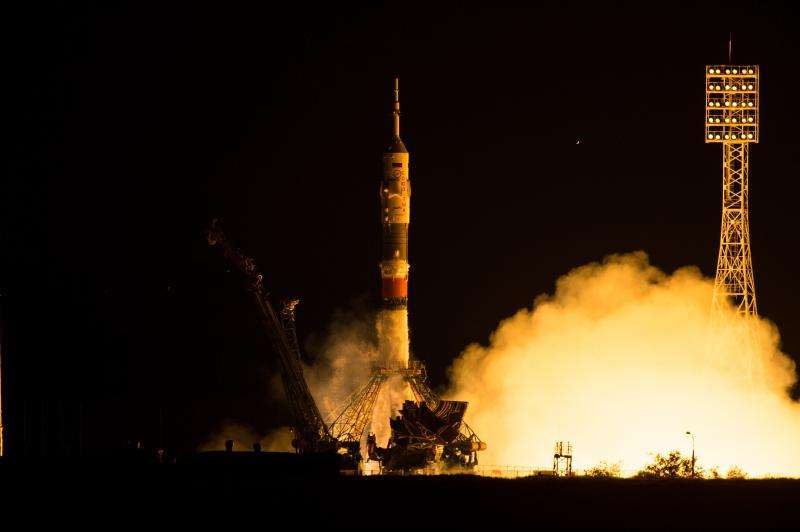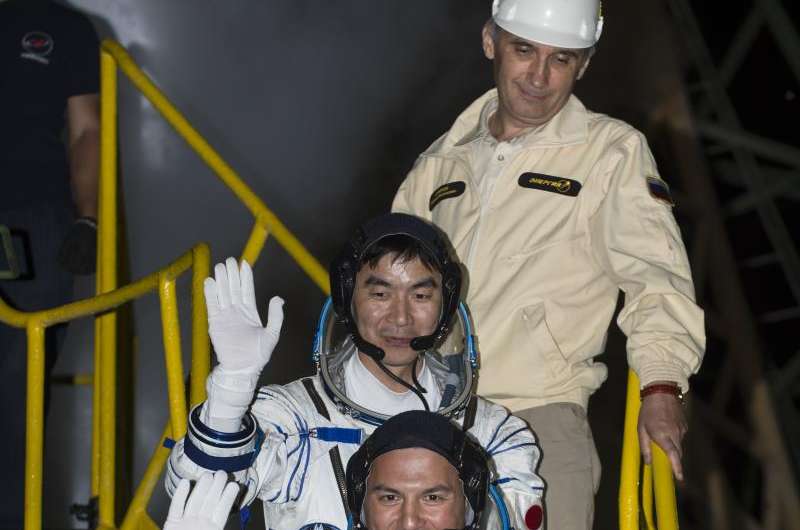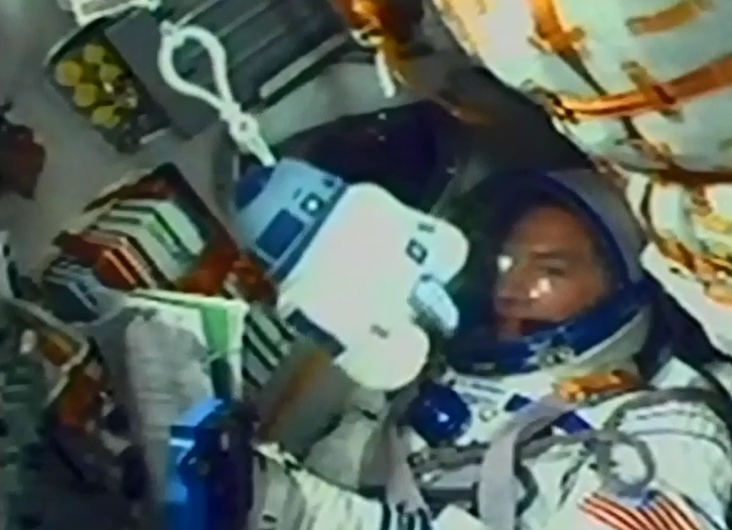Launch, docking returns International Space Station crew to full strength

Three crew members representing the United States, Russia and Japan have arrived at the International Space Station to continue important research that advances NASA's journey to Mars while making discoveries that can benefit all of humanity.
NASA astronaut Kjell Lindgren, Russian Federal Space Agency (Roscosmos) cosmonaut Oleg Kononenko and Japan Aerospace Exploration Agency (JAXA) astronaut Kimiya Yui launched from the Baikonur Cosmodrome in Kazakhstan at 5:02 p.m. EDT Wednesday (3:02 a.m., Thursday, July 23 in Baikonur) and docked at the station at 10:45 p.m., after orbiting Earth four times. Hatches between the two spacecraft will open at about 12:25 a.m. Thursday, July 23.
The arrival of Lindgren, Kononenko and Yui returns the station's crew complement to six. The three join Expedition 44 commander Gennady Padalka of Roscosmos and flight engineers Scott Kelly of NASA and Mikhail Kornienko of Roscosmos, who have been aboard the complex since March 27. During more than five months on humanity's only microgravity laboratory, the Expedition 44 crew members will conduct more than 250 science investigations in fields such as biology, Earth science, human research, physical sciences, and technology development.
Lindgren, Kononenko and Yui will remain aboard the station until late December. The station will host nine crew members for 10 days in September during a Soyuz taxi flight that includes Russian cosmonaut Sergey Volkov and Denmark's first astronaut Andreas Mogensen of the European Space Agency. At the end of the handover, Mogensen and Padalka will return to Earth in the Soyuz launched in March, leaving Kelly in command of Expedition 45.
Shortly thereafter on Sept. 15, Kelly and Kornienko will reach the halfway point of their one-year mission to advance understanding of the medical and psychological challenges astronauts face during long duration spaceflight, in addition to developing countermeasures that would reverse those effects. The pair will return to Earth in March 2016 after 342 cumulative days living in space.

Expedition 44 crew members are expected to be the first to harvest and eat crops grown aboard the station, another necessary advance for astronauts traveling on deep space missions. Astronauts will be allowed to eat half of the second crop of lettuce in the Veggie investigation, freezing the other half for a return to Earth where scientists will analyze the plants and compare them to a control set grown at NASA's Kennedy Space Center.
While a favorite pastime for astronauts aboard the station is photography, these crew members will take moon imagery that also will help calibrate navigation software on the Orion spacecraft. Crew members will photograph the moon's phases during one 29-day cycle, providing images of varying brightness to calibrate Orion's camera software to guide the spacecraft in case its transponder-based navigation capability is lost.

Ongoing research on the station also includes the Observation and Analysis of Smectic Islands in Space (OASIS) study to examine the behavior of liquid crystals in microgravity. This investigation may shine light on how microgravity affects the ability of liquid crystals to act like both a liquid and a solid. Liquid crystals are used in television and laptop screens, watches and clocks, and a variety of other electronics with flat panel displays. Studying them in microgravity may help researchers design better liquid crystal display devices on Earth. Engineers also could use certain types of liquid crystals in small screens applied directly to the face shields in future space helmets, enabling astronauts to easily view the small screens and read important information during a spacewalk.
The crew members also are scheduled to receive several cargo spacecraft – including the fifth Japanese HTV resupply flight and two Russian Progress resupply missions – each delivering tons of food, fuel, supplies and research. Russian crew members are scheduled to conduct a spacewalk for station maintenance and upgrades in August.
Provided by NASA





















